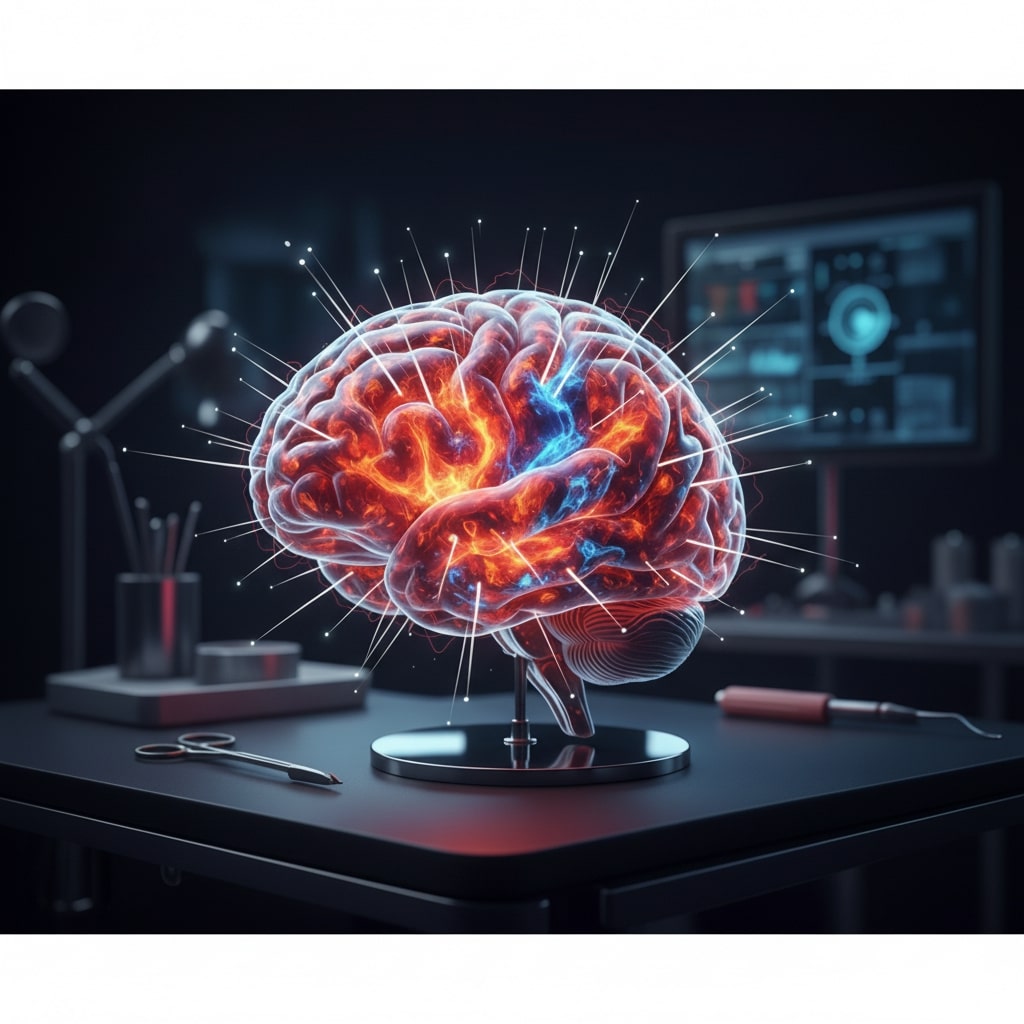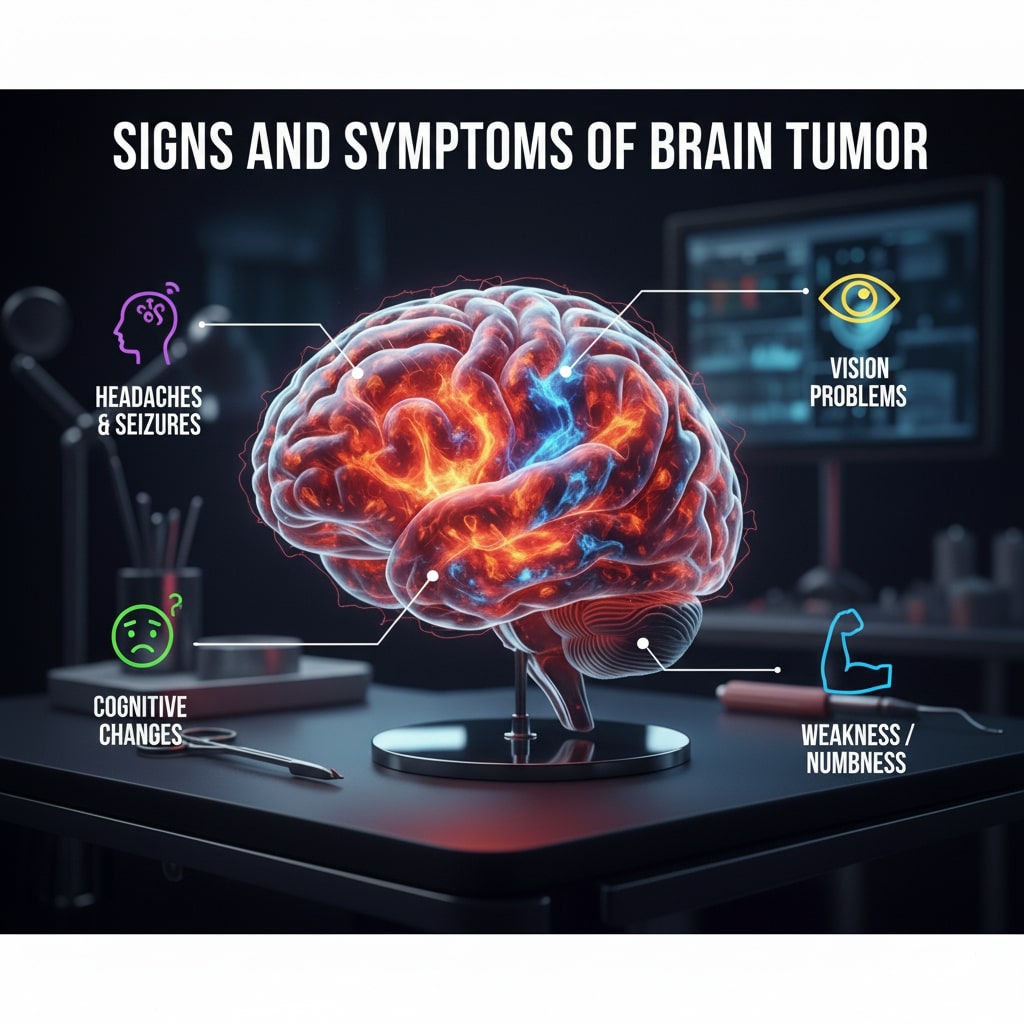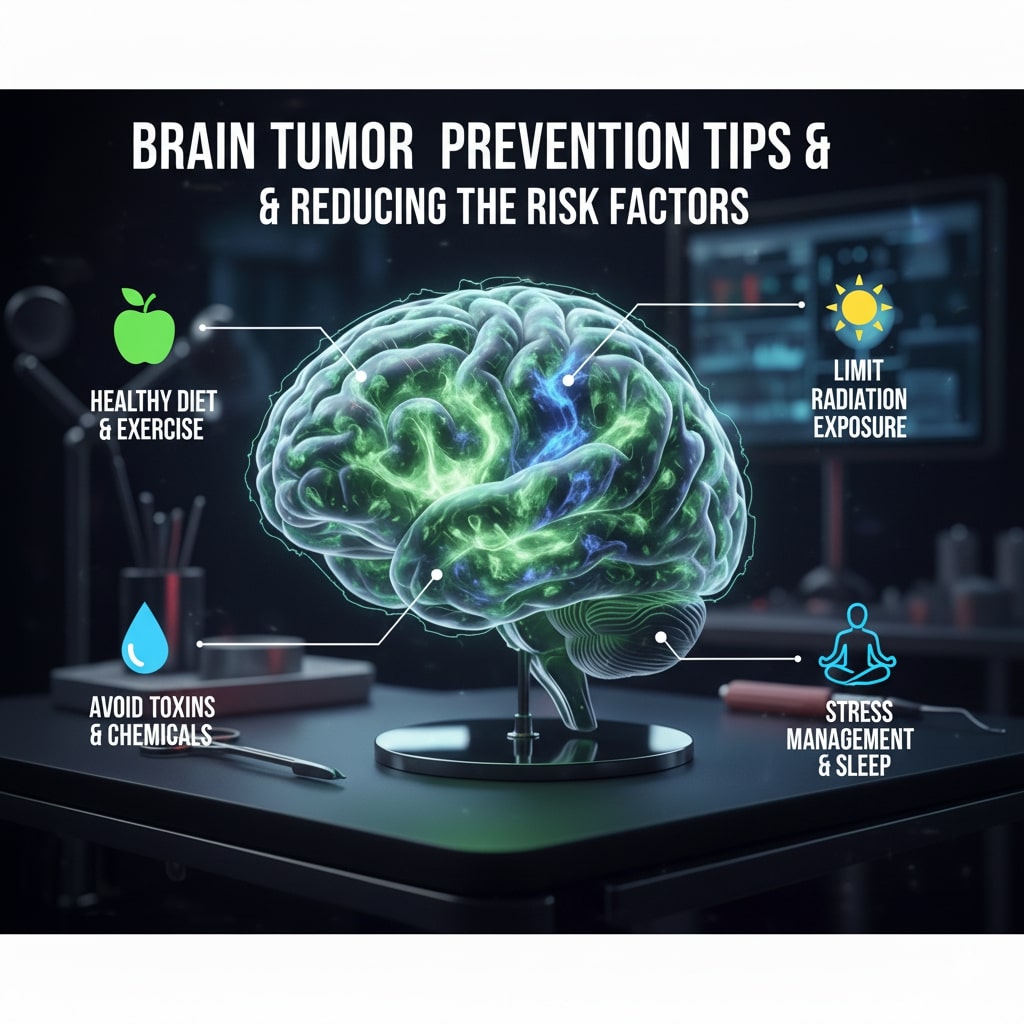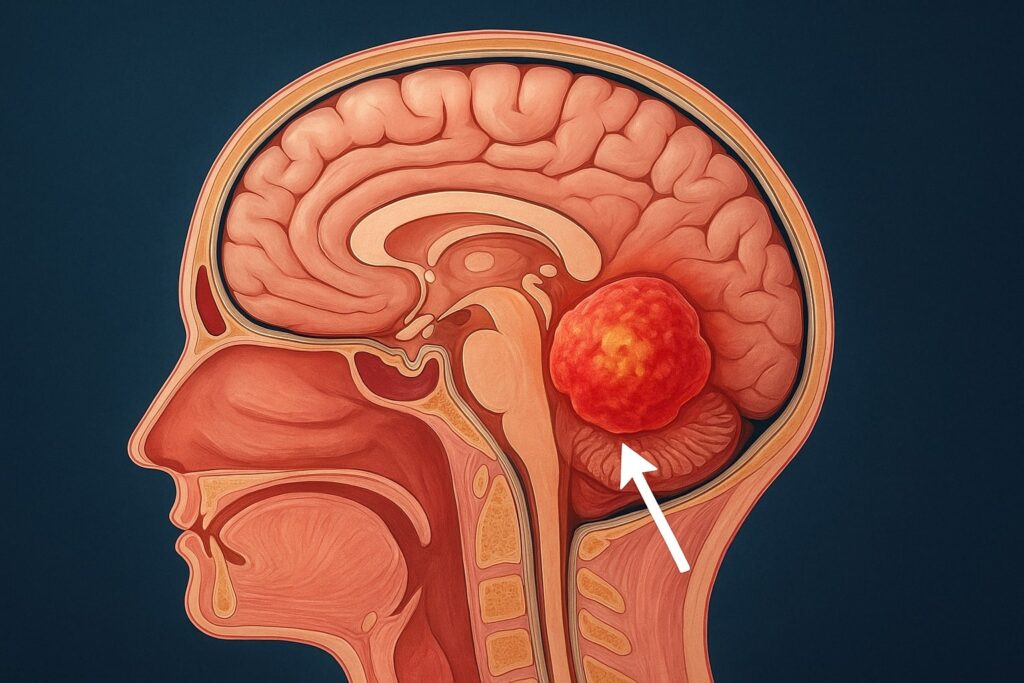A brain tumor represents one of the most complex and challenging neurological disorders in medical science. It occurs when abnormal cells form within the brain or its surrounding tissues, often interfering with critical functions such as memory, motor skills, speech, and balance. The tumor’s type, size, and location can affect the brain in different ways. It can cause mild problems or serious issues.
Although brain tumors can affect individuals of any age, certain risk factors , such as genetic predisposition, prolonged radiation exposure, and unhealthy lifestyle habits may increase the chances. Yet, it’s essential to recognize that no scientifically proven method currently exists to prevent brain tumors entirely. Medical researchers and neuroscientists continue to study the molecular and genetic mechanisms behind tumor formation to understand why these abnormal cell growths occur.
By understanding the potential causes, risk factors, and early warning signs, individuals can take meaningful steps to reduce their overall risk and strengthen their neurological health.
According to data from the American Brain Tumor Association (ABTA) and World Health Organization (WHO), brain tumors account for a small percentage of overall cancers but have a disproportionately high impact on quality of life due to the brain’s critical role in controlling body systems. In India alone, it’s estimated that more than 40,000 new brain tumor cases are diagnosed annually, with a growing number among younger populations.
However, understanding the underlying causes, early symptoms, and modifiable risk factors can empower individuals to make healthier lifestyle choices that support long-term brain health.
The purpose of this article is to educate readers about brain tumors, what they are, what causes them, how they present clinically, and most importantly, how one can adopt preventive practices that help reduce risk factors and maintain a healthy brain.

What is Brain Tumor?
A brain tumor is an abnormal mass of tissue where cells grow and multiply uncontrollably, disregarding the mechanisms that regulate normal cell growth. The brain is enclosed within a rigid skull, and even a small mass can cause pressure, disrupt nerve signaling, and impair essential functions such as memory, speech, coordination, or vision.
According to the American Brain Tumor Association (ABTA), over 120 different types of brain tumors have been identified, reflecting the complexity and diversity of this condition. However, for simplicity and clinical understanding, brain tumors are broadly divided into two main categories:
- Primary Brain Tumors – These originate within the brain itself or the surrounding tissues such as the meninges, cranial nerves, or pituitary gland.
- Secondary (Metastatic) Brain Tumors – These originate from cancers in other parts of the body (like the lungs, breast, or kidneys) and spread to the brain.
A brain tumor can be benign (non-cancerous) or malignant (cancerous). Even benign tumors can be dangerous. They can exert pressure on important brain areas, which may cause serious health problems. Within these broad categories, there are four major types of brain tumors most commonly discussed in medicine which include:
1. Gliomas
Gliomas develop from glial cells, which provide structural and metabolic support to neurons in our brain . This type account for about 33% of all brain tumors.
Its Types include:
Astrocytomas – ranging from low-grade (slow-growing) to high-grade, such as glioblastoma multiforme, one of the most aggressive brain cancers.
Oligodendrogliomas – slower-growing but can still be malignant.
Ependymomas – usually found in children, developing in the ventricles of the brain.
2. Meningiomas
Meningiomas arise from the meninges, the membranes surrounding the brain and spinal cord.They are usually benign, but their growth can exert pressure on brain tissue, causing neurological symptoms. These are most common in middle-aged and older women. Risk factors may include hormonal changes, previous radiation exposure, or genetic mutations.
3. Pituitary Adenomas
These tumors develop in the pituitary gland, the “master gland” controlling hormone secretion. They can cause symptoms through hormonal imbalance, such as:
- Weight gain or loss
- Fatigue
- Irregular menstrual cycles
- Vision problems (due to compression of the optic nerve)
- Most are non-cancerous and treatable with surgery or medication.
4. Medulloblastomas
Predominantly found in children, medulloblastomas originate in the cerebellum, which controls balance and coordination. They are highly malignant and can spread through cerebrospinal fluid. Symptoms include unsteady gait, vomiting, and loss of balance.
What Causes Brain Tumors: Risk factors Involved
The exact causes of brain tumors remain one of the most intricate mysteries in medical science. Despite tremendous advancements in neuroscience and oncology, experts still cannot pinpoint a single definitive factor responsible for the development of brain tumors.
Instead, it is now widely accepted that a complex interplay of genetic, environmental, and lifestyle-related influences contributes to the abnormal growth of cells within the brain.
Unlike many other cancers, brain tumors rarely have one identifiable cause. They can arise spontaneously from genetic mutations in healthy brain cells or as secondary growths that spread (metastasize) from cancers in other parts of the body.
Understanding these possible causes and risk factors helps clinicians and researchers focus on prevention strategies, early detection, and targeted therapies. Major contributing factors linked to brain tumor development include:
1. Genetic Predisposition
While the exact cause of brain tumors often remains uncertain, genetic predisposition plays a crucial role in a small but significant percentage of cases.
In some individuals, specific inherited mutations can interfere with the body’s natural ability to regulate cell growth and DNA repair ( the two key mechanisms that keep the brain’s cellular environment stable). When these mechanisms are disrupted, certain cells may begin to multiply uncontrollably, forming tumors.
2. Radiation Exposure
Exposure to ionizing radiation, often during medical treatments for other cancers or accidental occupational exposure, is one of the few confirmed risk factors.
For example, children who received radiation therapy to the head for leukemia have a higher chance of developing a secondary brain tumor later in life.
3. Weakened Immune System
Patients with HIV/AIDS, organ transplants, or autoimmune disorders treated with long-term immunosuppressive drugs are more likely to develop primary central nervous system lymphomas (PCNSL).
4. Environmental and Chemical Exposure
Some studies have suggested links between pesticides, solvents, vinyl chloride, and increased tumor risk. However, evidence remains inconsistent, and further research is needed. Minimizing exposure to industrial or agricultural chemicals is a prudent health practice.
5. Lifestyle and Hormonal Factors
While no direct causal relationship has been proven, habits like smoking, poor diet, and chronic stress may indirectly increase the risk by weakening immune defense or promoting oxidative DNA damage.
Hormonal influences may also play a role particularly in meningiomas, which are more common among women.
6. Age and Gender
- Certain tumors, like glioblastomas, occur more often in adults over 50.
- Medulloblastomas are more common in children.
- Meningiomas are more prevalent in women, possibly due to estrogen receptors found in these tumors.

What Are the Signs and Symptoms of Brain Tumor?
The clinical presentation of a brain tumor varies widely depending on the tumor’s type, size and location. Because the brain governs every body function from movement and memory to emotions and speech. Even a small abnormal growth can disrupt delicate neurological processes.
Recognizing the early manifestations is critical, as brain tumors often mimic less serious conditions such as migraines, stress, or mental fatigue. Below are the major clinical symptoms of a brain tumor, explained in depth:
1. Persistent or Worsening Headaches
One of the earliest and most common warning signs of a brain tumor is a headache that differs from ordinary tension or migraine headaches. These headaches are often:
- Worse in the morning or after waking up
- Intensified by coughing, sneezing, or physical activity
- Accompanied by nausea, vomiting, or blurred vision
The reason is that as the tumor grows, it increases intracranial pressure (ICP) ( the pressure inside the skull) leading to irritation of pain-sensitive structures in the brain. Patients often describe these headaches as deep, persistent, and resistant to over-the-counter pain relief.
2. Seizures (Fits or Convulsions)
A new-onset seizure in an adult who has never had epilepsy should always raise suspicion of a possible brain lesion. Seizures occur when abnormal electrical activity is triggered in the brain due to irritation from the tumor tissue.
There are different types of seizures, including:
- Generalized seizures: Loss of consciousness with full-body convulsions
- Focal seizures: Jerking or twitching of one limb or one side of the body
- Sensory seizures: Sudden tingling, visual flashes, or strange smells.
Studies show that up to 60–70% of brain tumor patients experience at least one seizure during the course of the disease.
3. Cognitive, Personality, or Behavioral Changes
Because the frontal and temporal lobes regulate emotional control, judgment, reasoning, and memory, tumors in these regions often result in subtle but noticeable changes in behavior. Patients or family members may observe:
- Short-term memory loss or confusion
- Difficulty concentrating on tasks
- Irritability, apathy, or depression
- Personality shifts, such as becoming unusually aggressive or withdrawn
These symptoms are often misattributed to stress, aging, or psychiatric illness, which can delay diagnosis. A professional neurological assessment and brain imaging (MRI or CT scan) are essential if these signs persist or worsen.
4. Weakness, Numbness, or Loss of Sensation
Brain tumors affecting the motor cortex – the region responsible for voluntary muscle movement , can cause weakness (paresis) or numbness (sensory loss) on one side of the body, typically opposite the tumor’s location.
For example:
- A tumor in the right hemisphere may affect movement or sensation in the left arm or leg.
- Over time, patients may notice clumsiness, difficulty gripping objects, or dragging of one foot while walking.
Such symptoms should be evaluated immediately, as they may indicate tumor growth or swelling in areas controlling motor function.
5. Vision, Hearing, and Speech Disturbances
The brain’s sensory regions primarily the occipital, temporal, and parietal lobes process visual, auditory, and speech information. When a tumor develops in these areas, it can lead to:
- Blurred or double vision (diplopia)
- Partial vision loss or seeing flashing lights
- Hearing loss or ringing in the ears (tinnitus)
- Difficulty understanding or forming speech (aphasia)
For instance, an occipital lobe tumor typically causes visual defects, while a temporal lobe tumor may interfere with hearing and language comprehension. Speech-related symptoms are especially concerning when tumors develop in the Broca’s or Wernicke’s areas of the brain.
6. Loss of Balance, Coordination, or Dizziness
Tumors involving the cerebellum ( the part of the brain that coordinates movement and posture) can cause significant problems with balance and coordination.
Patients may experience:
- Unsteady gait or staggering while walking
- Difficulty performing fine motor tasks (like buttoning clothes or writing)
- Dizziness or vertigo
These symptoms can sometimes resemble those of ear infections or inner ear disorders, making neurological evaluation crucial for accurate diagnosis.
7. Nausea, Vomiting, and Drowsiness
As a tumor enlarges, it can increase pressure within the skull, compressing brain structures and leading to nausea, vomiting, and extreme fatigue. These symptoms are often worse in the morning and improve as the day progresses.
In more severe cases, the buildup of pressure may also cause drowsiness, confusion, or even loss of consciousness, indicating potentially life-threatening intracranial hypertension that requires emergency medical care.
8. Endocrine or Hormonal Changes
Tumors located near the pituitary gland or hypothalamus can interfere with hormone production, leading to symptoms such as:
- Irregular menstrual cycles in women
- Unexpected weight gain or loss
- Fatigue and low energy
- Changes in body hair growth
- Excessive thirst and frequent urination
These endocrine imbalances often mimic thyroid or metabolic disorders, making imaging tests like MRI vital for accurate diagnosis.
9. Other Possible Signs
Some individuals may also experience:
- Difficulty swallowing (dysphagia)
- Drooping of the face (facial palsy)
- Reduced alertness or mental fog
- Changes in coordination of eye movements
While these symptoms may appear mild initially, their persistence or gradual worsening should never be ignored.

Brain Tumor Prevention Tips & Reducing The Risk Factors
While brain tumors cannot be entirely prevented, medical experts emphasize that reducing risk factors and maintaining overall brain health can make a real difference. Prevention in this context means minimizing potential causes and promoting cellular health through informed lifestyle choices.
1. Eat a Brain-Healthy Diet
A balanced diet rich in antioxidants and essential nutrients helps neutralize free radicals that damage brain cells.
- Include berries, leafy greens, citrus fruits, nuts, and seeds.
- Consume omega-3 fatty acids from fish, flaxseeds, or walnuts to reduce inflammation.
- Replace refined carbs and saturated fats with whole grains and lean proteins.
- Limit processed foods, sugary snacks, and red meat.
2. Quit Smoking and Reduce Alcohol
- Tobacco contains carcinogenic compounds that damage DNA.
- Excessive alcohol consumption increases oxidative stress and disrupts nutrient balance.
- Eliminating or reducing both can improve vascular health and brain function.
3. Avoid Unnecessary Radiation
- Limit exposure to CT scans and X-rays unless medically necessary.
- If your job involves radiation, follow safety protocols and wear protective equipment.
4. Minimize Chemical Exposure
- Avoid pesticides, solvents, and industrial chemicals.
- Use eco-friendly products when possible.
- Wear protective gear when handling chemicals in workplaces or farms.
5. Strengthen the Immune System
- A robust immune system helps in detecting and destroying abnormal cells before they multiply.
- Maintain regular exercise (at least 30 minutes daily).
6. Use Mobile Devices Wisely
Although there’s no conclusive link between mobile radiation and brain cancer, precautionary steps can be taken:
- Use speaker mode or hands-free options.
- Avoid keeping your phone directly against your head for long durations.
- Don’t sleep with your phone near your pillow.
7. Genetic Awareness and Regular Checkups
If brain tumors or related conditions run in your family:
- Consult a genetic counselor.
- Schedule periodic MRI scans or neurological assessments as recommended.
- Early detection can save lives.
8. Promote Cognitive and Emotional Health
Brain wellness isn’t only physical, it’s also psychological.
Engage in mental exercises like puzzles, reading, and learning new skills.
Maintain emotional balance and stress management.
Protect your head from injury with helmets during sports or biking.
Get adequate sleep (7–8 hours).
- Manage stress through meditation or yoga.
- Include immune-boosting foods like garlic, turmeric, and green tea.
The Bottom Line
The truth remains that brain tumors cannot be fully prevented, but understanding how they develop and adopting a proactive, health-focused lifestyle can significantly reduce risk and promote long-term brain health.
Prioritizing a nutritious diet, minimizing toxin exposure, protecting against radiation, and paying attention to early symptoms are powerful steps toward prevention.
In the realm of neurological health, awareness and education are the first lines of defense. By making mindful choices and staying informed, individuals can take meaningful steps to protect their brain , the most vital organ that defines who we are.





